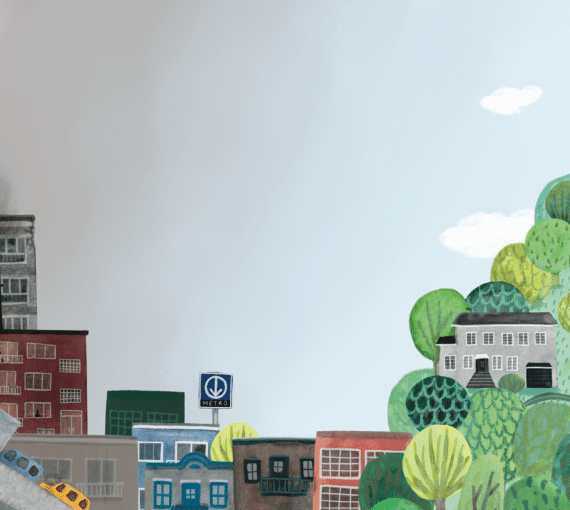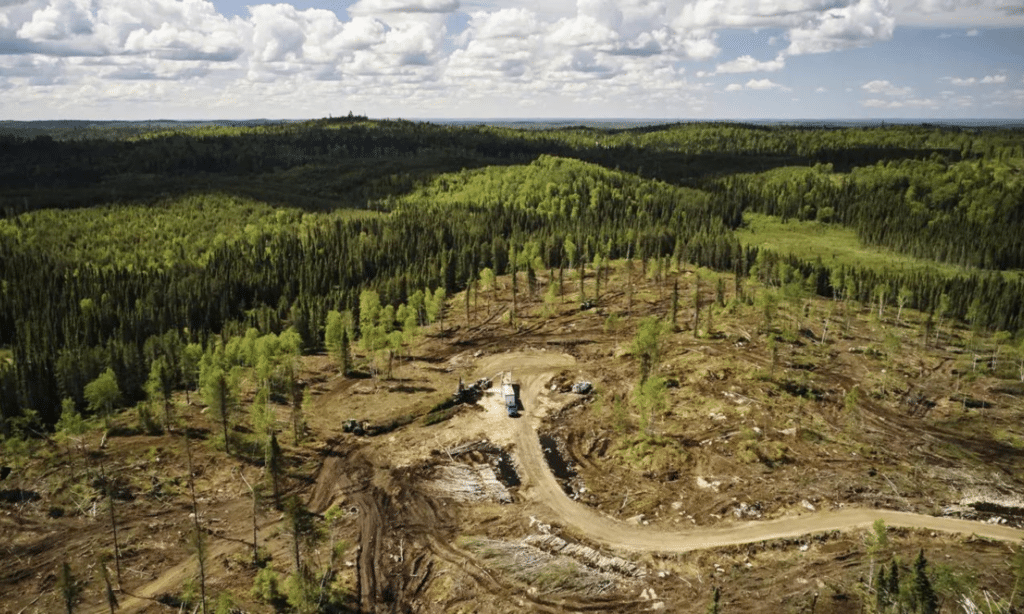
(Credit: Natural Resources Canada)
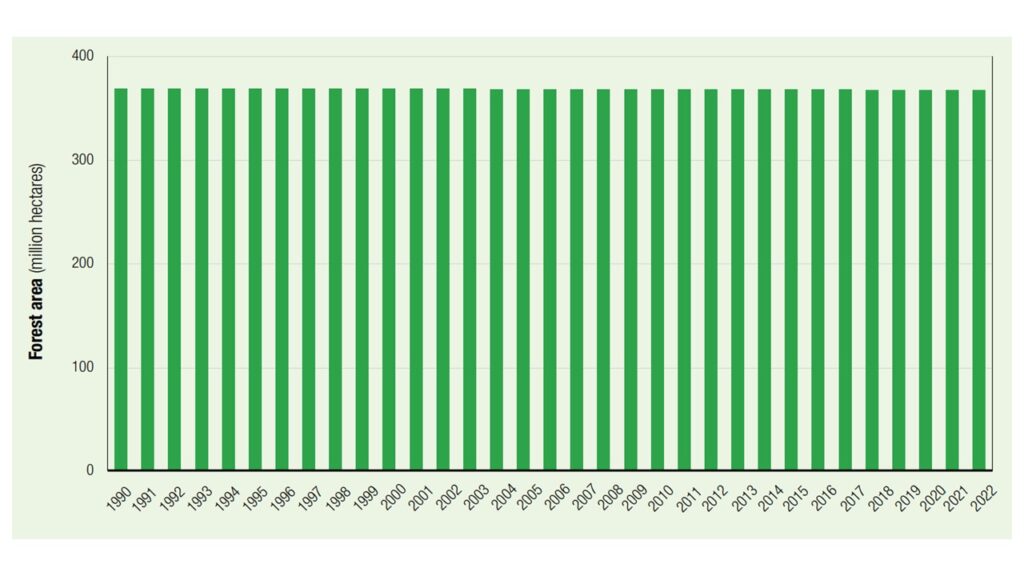
(Credit: Natural Resources Canada (2023) )
What’s wrong with this facile picture that declares that the amount of forest area in Canada never changes?
The concept of “forest area”, in this case, emphasizes quantity over quality, and does not distinguish between some types of deforestation — where trees are logged and are not replaced with new trees — and forest degradation, where trees are logged and essential characteristics of natural forests are changed, even when trees regrow. Forest degradation indicates the loss or deterioration of ecological integrity. This can result in measurable negative impacts on native species abundance and composition; forest structure and tree age class distribution, carbon stocks and other ecosystem services; and the adaptive capacity of a forest resilience in the face of natural disturbances. In many managed forests, legacies of logging road networks have led to forest degradation.
Roads have an array of negative impacts on forest ecosystems
A growing body of science over decades illustrates the extent to which roads degrade forest structure and affect wildlife populations. First, and most obviously, wildlife face increased death from collisions with vehicles, and often adapt to avoid roads, which alters natural behaviour patterns and can vastly decrease the range within which a species can use to meet its needs. However, direct mortality and range reduction aren’t the only ways that roads drive wildlife decline.
Logging roads have also been shown to increase predation risk and predator success rates (e.g., wolves have greater success in killing caribou and moose where roads and other linear features enter into their habitat). Logging roads can also indirectly affect fish and other wildlife populations, such as lake trout and moose, as too much access can lead to overexploitation from hunting and fishing. Additionally, species that rely on interior forest habitats for survival are negatively affected by fragmentation of intact habitats that create more edge habitat than would be found in natural forests. For example, increased fragmentation associated with old-growth forest logging in British Columbia increased egg predation on marbled murrelets — a threatened seabird that relies on coastal old-growth forests in B.C. for nesting.

Logging roads degrade forest ecosystems in a variety of ways. (Credit: Courtenay Lewis)
Logging roads are also examples of growth-inducing infrastructure, which introduce non-incremental changes in where and how natural resources are exploited. They can open up intact forest areas, resulting in intensification of industrial development and acceleration of carbon emissions.
Despite their role in forest degradation, the proliferation and cumulative impacts of logging roads are either missing or downplayed in public reports on forest integrity. While conceptually, policy-makers may understand that roads can fundamentally alter forest ecosystems over the short and long term, degradation as a result of the cumulative impact of road networks, like other forms of logging-driven degradation, is largely overlooked when governments report on the health of forests across Canada. The role of these roads in spurring new, often unrelated development, tends to be ignored in assessment processes and planning decisions.
The direct, or primary impacts of large-scale infrastructure projects are well-recognized, with policies designed to mitigate these in land use and resource management planning. However, proactive measures to prevent unsustainable cumulative impacts, particularly from roads and transmission lines that open new areas for development, are sorely lacking. Decision makers frequently overlook the secondary effects of enabling new development, leading to long-term environmental and social consequences. –
Justina Ray, Wildlife Conservation Society Canada
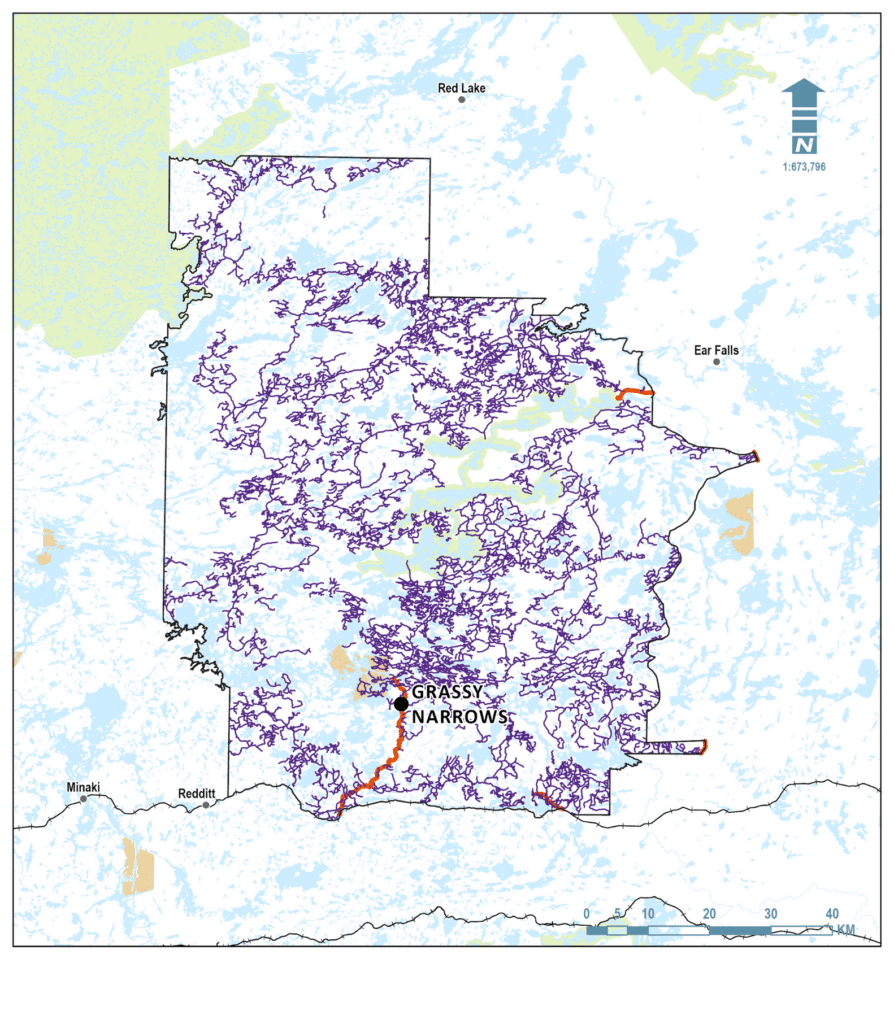
The Whiskey Jack Forest in Ontario overlaps with the traditional territory of the Grassy Narrows First Nation (Asabiinyashkosiwagong Nitam-Anishinaabeg). For 20 years, Grassy Narrows has had a blockade to prevent clearcut logging from continuing in their traditional territory, but the logging road legacy still significantly impacts the land. (credit: David Suzuki Foundation (2024))
Natural disturbance versus logging roads
One of the main pillars of the logging industry’s sustainability assertions is that its practices emulate natural disturbance. Logging roads are perhaps the starkest example of how this often fails to bear out in practice. Natural disturbances do not generate roads. In forest-management planning, some forest access roads are identified for decommissioning to meet non-timber objectives. However, the success of restoration can be highly variable, and often not sufficiently tied to wildlife objectives (e.g., maintaining critical caribou habitat) or federal objectives to halt and reverse nature loss.
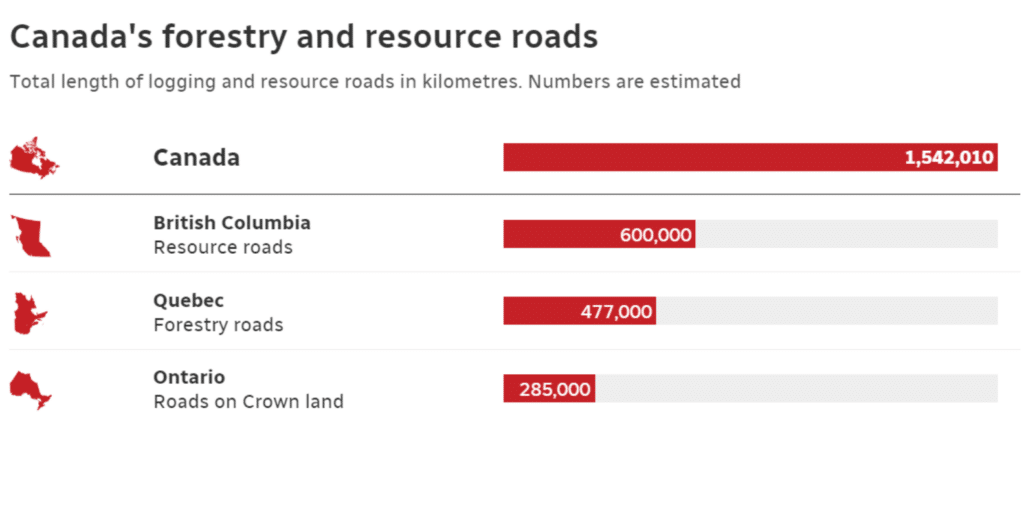
Close to 1.5 million kilometres (932,000 miles) of logging, mining and oil exploration or so-called resource roads snake throughout Canada — enough to circle Earth 37 times. (Credit: CBC Investigates, 2022 )
The proliferation of logging roads in natural forests is not consistent with halting and reversing forest degradation and biodiversity loss and remains largely absent in the narrative about forestry sustainability in Canada. According to CBC News, Canada has more than 1.5 million kilometres of logging and resource access roads — enough to circle Earth 37 times. More than 90 per cent are in B.C., Quebec and Ontario.
As roads have been shown to degrade forest health and alter forest structure with cascading effects on other forest values, their impacts must become front and centre in assessments of forest degradation. Governments and industry must explicitly consider how roads contribute to cumulative impacts at the landscape level in their planning and recognize that new roads in intact areas and natural forests are incompatible with Canada’s international nature commitments. Governments need to pump the brakes and chart a new course.
Help Canada’s degraded forests!
This blog focuses on the impacts of industrial logging on climate change and extreme flooding in forests. It is part of a joint blog series by the David Suzuki Foundation and the Natural Resources Defense Council exploring forest degradation in Canada.
Our work
Always grounded in sound evidence, the David Suzuki Foundation empowers people to take action in their communities on the environmental challenges we collectively face.




